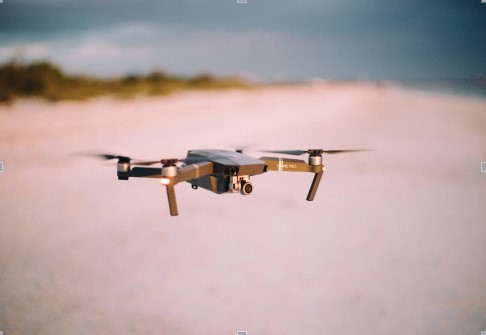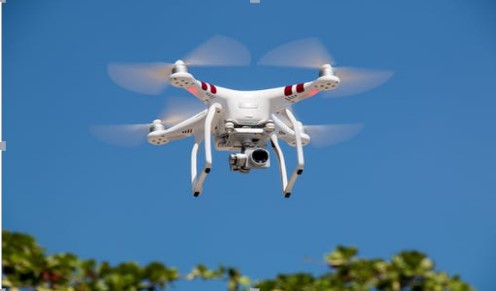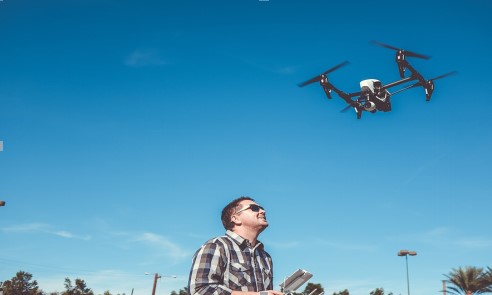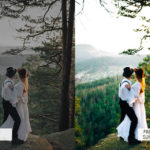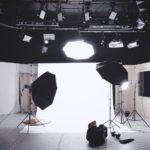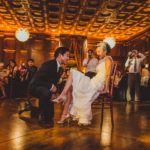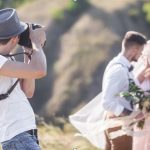One of the most common uses of drones today is aerial photography and filming, especially with drones becoming cheaper, popular and affordable to consumers. With these technological advancements taking photography to unimaginable heights, most photographers now desire to venture into aerial photography but probably wondering how to get started. Here are some tips to help you get started;
Learn and Practice flying first
This is a basic need for any aerial photographer. Before you can hope to take the amazing aerial photos you’ve always dreamt of, you should learn how to properly fly a drone. It’s not as difficult as it sounds. However, advancing your piloting skills will only be a result of consistent practice.
Luckily, there are smaller and cheaper drones that you can comfortably use to practice flying and master controls of a drone without the fear of breakages.
Professional drone piloting means you can comfortably maneuver drones in the right locations at the right time. It also means you can safely fly in difficult weather or other situations with an ability to foretell and prevent crashes. This, all together, is to ensure your photography skills are not limited by your flying skills.
It is always advisable to take off in clear, open spaces for a start and the drone should always be in your sight. Constantly check your battery levels to avoid inconveniences. Most drones though have an automatic return to home function whenever the battery levels are low therefore no need to worry.
Fly safely and legally
With drones now affordable and popular with most people, it has prompted governments to regulate drone flying especially with the dangers posed by careless flying. This is to say there are rules and regulations about how, where and when to fly.
In the US, a drone whose weight exceeds 0.55 pounds must be registered, everyone is expected to be aware of strict no-fly zones. For commercial uses, one is required to apply for section 33 exemptions from the FAA.
Well, unless you want to get on the wrong side of the law, it is only imperative to read, understand and follow these laws to be on the safe side.
Note: Different countries have different drone rules and regulations.
Choose the right equipment
Assuming you are confident with your piloting skills plus you’re aware of all the rules and regulations including probably having a license, we now can get into photography. What kind of a drone to start with? What camera type is the best? These are some of the questions you’re probably asking yourself.
There is a range of drones in the market, from the cheapest toy drones with cameras to the most expensive photography drones. If you have a camera and only need the drone, make sure to consider the weight of your camera since not all drones can support heavy cameras.
For quality images, there is a series of drones which come with a range of suitable packages including cameras that offer up to 4K resolution and mechanical shatters to enhance smooth and undistorted Ultra-HD footages. These are among the many models you can consider for a beginner, intermediate or advanced aerial photography.
Be creative and imaginative
Besides mastering control of your drone, creativity and imagination are other factors that define successful aerial photographers. To some, it is a natural gift but to others, it needs massive research and experience. Trying different things, different places, taking many shots and watching other people’s creative works helps to improve your creativity.
Planning your aerial shots also gives you imaginative pictures of how you’d like your picture to be and that motivates you to work towards it. Don’t get too excited to fly the drone and forget you’re a photographer and don’t be afraid to try new things.
Learn to bracket your photos
Getting the right exposure sometimes becomes a challenge especially when taking one photo at a time. With drones today, it is possible to take a couple of photos with different exposure at a time. For most drones, it is usually 3-shots brackets or more depending on the drone. You can always use this to underexpose or overexpose your shots and be able to choose the perfect one amongst them. This also helps you to know what your preferred exposure is at different times of the day.
For a start, it is also advisable to use automatic exposure mode. This is probably because there is too much to worry about when it comes to drone control. At least until you have fully mastered control of your drone, make use of this feature. Automatic exposure mode enables you to focus on other related details while still giving you nicely exposed images.
Make good use of filters
Most people, necessarily photographers think of filters as old-fashioned with all the advancements in image manipulation. However, sometimes these filters offer a wide range of services that nothing else can.
There are different types of drone-camera filters including;
- Circular polarizer filter. These filters reduce glare reflections. They are commonly used to make skies appear deeper and richly blue.
- Neutral Density filters. These are commonly used in cases of much sunlight reducing light levels without any side effects. Say like a sunglass lens for your camera. With most drone cameras having fixed apertures and limited gain adjustments, it leaves you with limited options for changing the shutter speed. These filters limit the amount of light entering the lens forcing the camera to use a longer shutter speed. This produces generally quality images and video footage.
- Ultraviolet filters. These are mainly used as protective filters blocking the lens from UV wavelength.
- Hybrid filters. These are majorly used to prevent stacking. Since drone cameras are usually mounted on a gimbal which needs to be balanced, using multiple filters adds weight on the gimbal. This causes faster wear off the servo motor. To prevent this, one uses hybrid filters in case more than one filter type is needed
Have multiple batteries
With Most drone batteries lasting for 20-30 minutes, you might be disappointed when your battery runs out and you’re in the middle of a shoot with no emergencies batteries. This is quite frustrating especially for commercial drone photographers who have long session shoots and have no laxity of recharging their batteries every now and then.
To avoid these kinds of inconveniences, it is only wise to have a few extra batteries to keep you going. It could, however, be inconveniencing to keep changing batteries especially on shoots that take longer, thus the need to buy durable and longer lasting batteries. When buying an extra battery, choose one that fulfills your requirements, has a slower discharge rate and is also safe to use. With an extra battery, you won’t be worried about the unplanned termination of photographing sessions.
These are just a few of the many things to consider and work on when venturing into aerial photography. With aerial photography becoming so common, your photos need to be amazing for you to be considered an exemplary photographer among many. This is not achieved in a day. It may take weeks, months or even years be to get there. But with passion and extensive practice, it won’t take long. If you’re looking for high-quality Miami drone services, The Drone Genius is the place to go.
Related Posts

